Even though PayPal simplifies the process of making business transactions online, the service does come with some risks—the most important of which are bad actors using PayPal for illegal transactions involving activities such as fraud, offshore gambling and money laundering. Another risk is a misunderstanding between sellers and buyers, leading to disputes. Sometimes the transactions are not properly authorized, which can also cause problems. Depending on the geopolitical situation, PayPal may or may not provide service to online users belonging to a specific country, which can become a problem for users relying on PayPal payments for work.
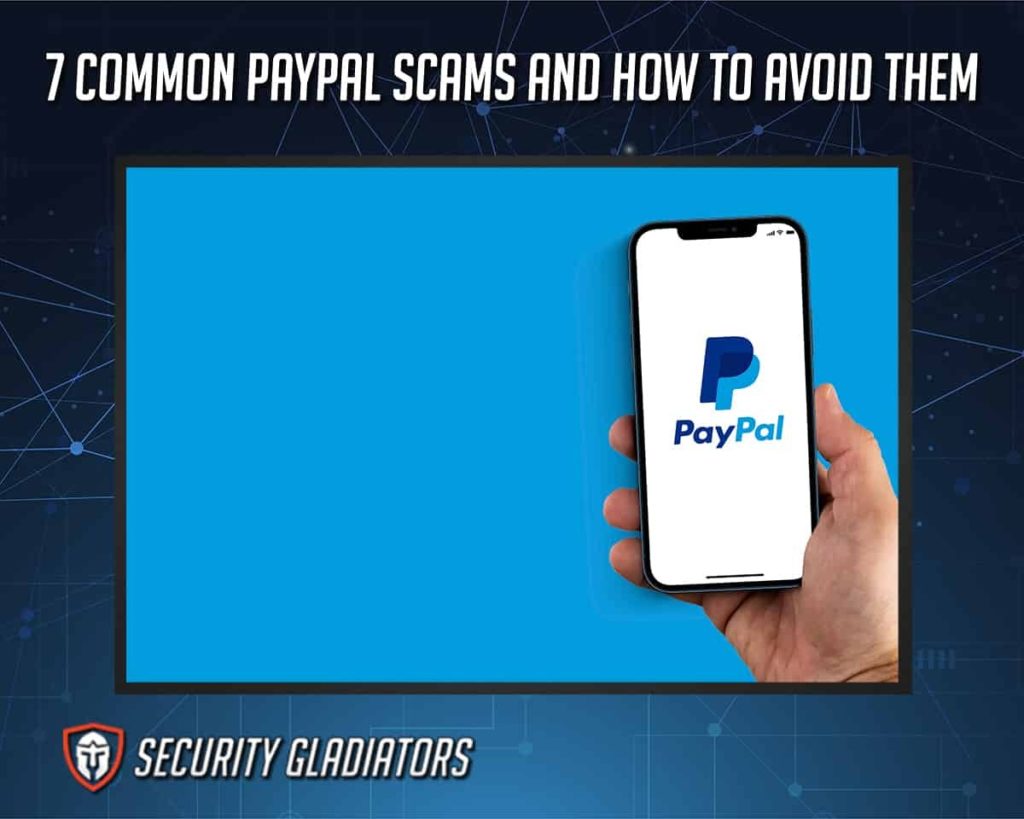
In this guide, readers will learn about the most common PayPal scams and the simplest methods to avoid falling for such scams. This guide will also mention secondary issues, such as how PayPal refunds money if a user is scammed and how a PayPal scam report works. Readers will also learn more about the ways cybercriminals can use services like PayPal to carry out lesser-known but potent scams. By the end of this guide, readers will know more about how to recover from PayPal scams.
The 7 common PayPal scams and how to avoid them are detailed below.
- Overpayment PayPal Scam
- Advanced Fee Scam
- Fake Email Scam
- Hacked PayPal Scam
- Fake Charities
- PayPal Shipping Address Scams
- Fake Hyperlink Scam
Table of Contents
1. Overpayment PayPal Scam
The overpayment PayPal scam is a very common PayPal scam. In this type of scam, the scammer acts as a buyer of a product or a service, then uses PayPal to transfer money to the target seller. But instead of paying the exact amount for the product or service purchased, the scammer transfers an amount that exceeds the cost of the item/service.
After that, the scammer (acting as the buyer) informs the seller of the incorrect amount that exceeds the cost. The main aim of the scammer is to convince the seller to transfer the amount that exceeded the actual cost of the product or service back into the buyer’s account.
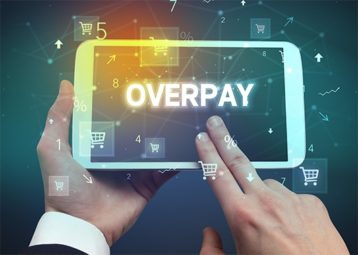
Once the seller calculates the overpaid amount and transfers the funds back to the buyer’s account, the scammer (in this case, the buyer) logs a complaint of a hacked account via PayPal’s customer support team. Here, the scammer (buyer) tries to convince PayPal that the hackers compromised the account and made a payment to the seller.
PayPal, thinking the buyer did not intend to make a payment, reimburses the full amount that the buyer transferred to the seller’s account originally. The seller loses the amount for the sale and the amount the seller transferred back to the buyer’s account to make up for the overpayment in the first instance.
PayPal sellers need to consider and understand that even though the scammer (the buyer in this case) is acting as a legitimate purchaser of the product or service, that is not actually the case. And even though the buyer has transferred the amount to the seller’s account does not mean everything has gone according to plan.
2. Advanced Fee Scam
The advanced fee scam is usually part of a much bigger scam where hackers send malicious emails to notify target individuals of having won a large sum of money through a lottery or inheritance from a long-lost ancestor in a foreign country. The only roadblock to receiving the large sum of money is that the email recipient (the target victim) must pay an advanced fee disguised as a transaction fee over PayPal. Once the user transfers the money into a specified PayPal account, the promised reward never arrives.
Note:
The advanced fee scam usually occurs over email but can also trick the user into landing on a malicious website or forum. The user may also land on such a malicious website via a search engine or a link shared on social media platforms, instant messaging apps or online forums.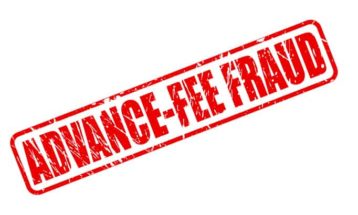
As with most PayPal scams, the techniques are less technical and more emotional. In the advanced fee scam, scammers want to play on the emotion of the target victim. The mere thought of a large sum of money coming into one’s account via inheritance, lottery, or any other method (a dying wish of someone wealthy abroad) can become too much for anyone. That is especially true when the target individual thinks there is nothing to lose and everything to gain.
Users need to consider that the chances of someone receiving a large sum of money from an unknown source are low enough to be practically zero. Moreover, scammers can make all sorts of excuses to receive the advance fee—usually a small sum to, again, exploit the target individual’s emotions and entice the victim to take a chance.
Readers should also understand that such messages do not result in a payout, no matter the forum. The scammer only wants to collect the small advance payment and give nothing in return—let alone a fortune from someone the target individual has likely never heard of or met personally.
3. Fake Email Scam
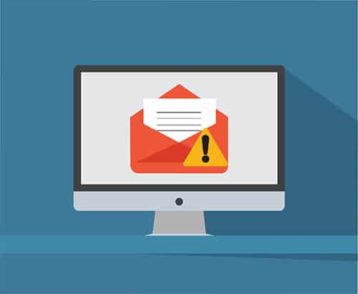
Fake email scams or phishing scams are all too common on the internet. In the context of PayPal, scammers make an illegal attempt to make the target individual give up sensitive information. The fake email scam involves an expertly crafted email message from scammers sent to the target individual where scammers fraudulently claim that the message is from PayPal.
The technique used in fake email scams is known as phishing. Depending on the scammer’s skill level, the fake email can be very specific or very general. If the target individual is an important employee at a prominent organization, the fake email can be specific. Otherwise, a general message is used. The main purpose of the email message is to trick the target individual into clicking a link or a picture or even replying with the necessary details. In cases where there are malicious links involved, scammers try to spoof legitimate-looking websites so that individual targets become more susceptible to providing personal information, including PayPal account details. Users who understand how legitimate URLs should look have a smaller chance of getting scammed via a fake email scam.
4. Hacked PayPal Scam
The hacked PayPal scam is another common scam in which hackers send money from a compromised PayPal account to a seller’s PayPal account in exchange for a service or product. Only later, the seller gets a message from PayPal that the buyer’s PayPal account is hacked. The seller may have already shipped the product and hence may lose the transferred amount, as well as the product.
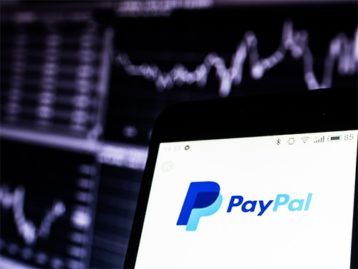
Sometimes the sole aim of scammers is to compromise a PayPal account, take all the money out and then vanish. However, sometimes scammers make use of the hacked PayPal scam to purchase products and services through the compromised account. There is no advanced technology being used here except for an unwary seller with a PayPal account. The purpose of the Hacked PayPal Scam is to somehow convince the seller to ship the product and proceed with the transaction, only to later find out that PayPal has reversed the transaction.
Users who receive payments via PayPal for services and goods need to consider the Seller Protection Program from PayPal. If part of PayPal’s Seller Protection Program, sellers can log a complaint via PayPal customer support and receive reimbursement if the case is strong enough. Sellers should also understand that PayPal will, in many cases, not reimburse the amount to any seller. The seller has to ensure all Seller Protection Program requirements are met. Otherwise, there is always a chance of scammers using a hacked PayPal account to make purchases.
5. Fake Charities
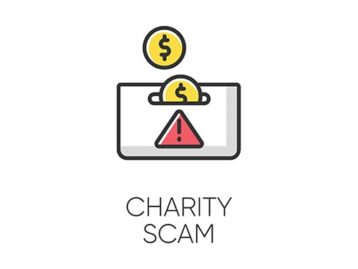
The fake charities PayPal scam is a type of scam where scammers look for natural disasters and other tragedies to set up related charity organizations. Scammers then try to trick users into donating to fake charities that are exploiting such tragedies.
The techniques used in setting up fake charities and tricking people into donating via PayPal involve exploiting victims’ emotions. Scammers often take advantage of human nature, which in this case presents as people trying to help victims of a disaster.
The purpose of a fake charities scam is to deceive potential victims into making payments via PayPal to the scammer’s PayPal account under the guise of helping legitimate victims. Sometimes, scammers target the victim directly by setting up a charity that deals with the tragedy the victim may have dealt with in the past. Then, after collecting information about the victim, scammers launch the charity scam scheme and hope that the victim would follow the scam via a website’s social media account. Once the victim makes contact with the desired information, the aim is to get that PayPal payment.
Note:
Readers need to consider the fact that any charity organization claiming to help victims of a particular scam, natural disaster, personal tragedy, or any other charitable cause may not be a legitimate source of support for people in need. Online users should also understand that fake charity scams can take many shapes and forms. Sometimes scammers use a slight twist on the fake charity angle and instead re-label the scam as an investment opportunity or an advanced version of the classic Nigerian Prince scam, a notoriously common online scam.6. PayPal Shipping Address Scams
PayPal shipping address scams encompass multiple scams with slight variations. However, all PayPal shipping address scams have one thing in common, which is scammers exploiting PayPal systems to scam sellers out of products and services.
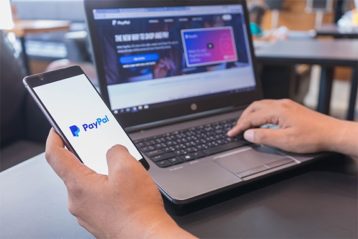
In the PayPal shipping address scam, the buyer (usually the scammer) wants the seller to use a particular shipping account that the buyer is familiar with. The technique scammers use here is that of shipping discounts. Acting as a buyer, the scammer entices the seller to use a shipping account that offers great discounts. The buyer/scammer may also claim to have a close relationship with the shipping service, creating the illusion that the transaction would be more reliable than usual. Sometimes, the buyer/scammer makes using a different shipping label a requirement for the transaction to take place.
Once the seller ships the product using the buyer/scammer shipping label or service, the buyer/scammer changes the shipping address by contacting the shipping service. When that is done, the buyer/scammer gets in touch with PayPal and logs a complaint claiming that the seller did not ship the product. The seller is free to explain to PayPal that the items were shipped, but since the buyer didn’t get the items, PayPal sides with the buyer. Opening a case usually results in a win for the scammer.
Readers need to consider the fact that just because a buyer is offering a shipping service or label does not mean the transaction will be smooth. Such buyers/scammers can change the delivery address, make a complaint of non-delivery and then get a PayPal refund.
PayPal users should understand that the buyer/scammer may tweak the PayPal shipping address scam by demanding that the seller needs to transfer the money to the shipping service instead of the buyer’s account—all while trying to convince the seller that wiring the money to the shipping service will result in a discounted shipping rate.
Of course, there is no shipping service account, and the account the buyer wants the seller to transfer the money to is actually an account belonging to the buyer or the buyer’s accomplice. Once the seller has transferred the money to the fake shipping account, the buyer vanishes. Then, the seller finds out that the buyer/scammer used a hacked credit card or account to make the payment. Once the legitimate account owner makes a complaint, the seller is left with no other choice but to refund the money.
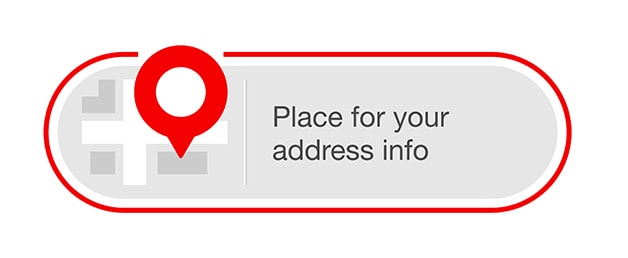
Another important variation of the PayPal shipping address scam is where scammers compromise a PayPal account and then purchase products via the compromised account. The seller gets the money in the bank account and ships the product only to find out that the account did not belong to the buyer/scammer and hence has to refund the money. The buyer/scammer gets the product and is free to re-sell it accordingly.
7. Fake Hyperlink Scam
The fake hyperlink scam is a PayPal scam where scammers launch multiple different scams hoping that one would lead an unsuspecting user to click on a hyperlink on a website or an email message.
Most of the time, scammers mix the fake hyperlink scam with email scams and other types of phishing scams. Essentially, a team of scammers creates fake URLs that look like legitimate ones. The main purpose of the fake hyperlink scam is to trick users into giving up information via phishing emails, spoofed websites and social media posts that are actually malicious. All of these opportunities look like official/legitimate correspondence from whatever company or organization scammers are trying to impersonate.

Readers should consider the fact that any link on any given forum (whether it be social media, online forums, websites, apps, services and/or instant messaging apps) can be malicious. Just because the link is present on legitimate websites or messaging services like Reddit, Quora, Facebook or WhatsApp does not mean the place where the link takes the user is also legitimate.
Users should also understand that scammers are always coming up with slight variations of each type of PayPal scam to get victims to continue giving up PayPal account information on phishing websites.
Which Platforms are PayPal Scams Common on?
The platforms on which PayPal scams are common are given below.
- eBay: Ecommerce platforms like eBay are popular targets for scammers who know there will be plenty of buyers and sellers on the platform to scam. In the context of PayPal, scammers usually pose as buyers on eBay. Once scammers have purchased an item, the amount is paid. Upon receiving the payment, PayPal informs the seller that the account has been credited with $300 with the status of “Pending,” meaning the payment is still processing and has not yet been cleared. Upon receiving the message, the seller usually ships the product. Once the scammer/buyer has ensured that the product has been shipped, the payment is canceled. The only thing PayPal can do next is inform the seller that the payment was canceled. Apart from that, scammers also pose as PayPal and/or eBay to send messages to both buyers and sellers in hopes of receiving personal details about the relevant accounts.
- Facebook: Essentially, anywhere a large number of users are willing to buy and sell online is a place prone to scams. That’s why Facebook is rife with PayPal scams as well. Scammers usually set up multiple Facebook pages with fake products that look like legitimate ones. Most of the time, scammers copy images of real products from real websites and put those images up on Facebook groups. Once that’s done, scammers blast out thousands of notifications to hundreds or thousands of Facebook users that scammers know would be interested in purchasing those items. To further entice Facebook users, scammers sell legitimate-looking products for 20% or 30% of the price users normally pay for a genuine version of the product on offer. Once a Facebook user goes to such a page and sees the PayPal sign available as a payment method, the user feels reassured that the offering is not a scam. However, scammers can also use PayPal accounts, and when the user transfers the money to the scammer’s account via PayPal, the scammer ships an unacceptably low-grade version of the shown product. The Facebook user lodges a complaint with the seller, and the seller offers the option of returning the product, which ends up costing the Facebook user more than the product. Meanwhile, PayPal sits on the sidelines as the payment gets processed long before the product arrives either domestically or from abroad.
- Amazon: Amazon is not immune from PayPal scams either. Scammers set up business accounts as sellers and try to direct buyers off of the official Amazon website. Of course, once the transaction takes place off the Amazon platform, the seller no longer has to adhere to any of Amazon’s requirements that may protect the buyer. Usually, such scammers require the money to be sent via PayPal and incentivize the buyer with promises of faster and cheaper shipping. Once the buyer transfers the money, the product either does not arrive or is a third or fourth copy of the original shown, if not damaged.
- Instagram: PayPal scams on Instagram are not rare either. Scammers pretend to be buyers of paintings and other artistic offerings on Instagram, knowing that most users are likely to jump on the opportunity to sell art. Once scammers have decided on a painting (or another similar offering), the Instagram seller is asked for an email address to which the money is to be transferred via PayPal. Once the seller provides the email address, the scammers try to access the seller’s PayPal. Scammers do that by first informing the seller that the payment through PayPal isn’t going through. To fix the issue, scammers ask the seller to send a code that the user’s mobile phone will receive in a short time. Once the user sends that code, the scammers gain access to the seller’s PayPal account. The “code” the scammer/buyer asks the Instagram art seller to send is the code required to reset the password on the seller’s PayPal account. Scammers try to exploit the thrill that comes from selling one’s art via Instagram. As always, scammers can tweak the scam to hurt many other individuals trying to make money via Instagram.
- WhatsApp: WhatsApp may not fit the social media platform scam definition, but nevertheless, scammers use WhatsApp messages to sell and buy items. Once in contact with a seller, scammers ask the seller to receive payments via PayPal in an attempt to appear legitimate, then the scammer transfers the money to another PayPal account chosen beforehand. Once the funds end up in the seller’s account, fraudsters use PayPal to claim a chargeback. In the end, the seller loses the money and potentially the product as well. Scammers also sometimes use compromised Facebook accounts to get the victim’s WhatsApp details and then continue to dig for PayPal account information on WhatsApp.
- Twitter: A given platform does not have to be a service for buying and selling goods to attract PayPal scammers. Hackers can use Twitter bots to deceive users and receive funds via PayPal payments directly into the scammer’s accounts. Essentially, hackers set up bots that are able to spy on two or more Twitter users trying to engage in a business transaction and hence ask for a PayPal address. As soon as one of the legitimate Twitter users mentions the word “PayPal,” the Twitter bot springs into action and creates a fake profile resembling the Twitter user at the other end of the bargain. Then, the Twitter bot provides the user wanting to pay via PayPal with a scammer-owned PayPal account. The Twitter user ends up sending money to the scammer-controlled PayPal account, and there is nothing that can be done at that stage.
What are the Methods Used for Scamming on PayPal?
There are many methods used for scamming on PayPal, as can be judged by the fact that fraud and criminal activity does still occur on PayPal regularly. However, how PayPal users get scammed largely depends on how educated the user is on various PayPal scam risks.
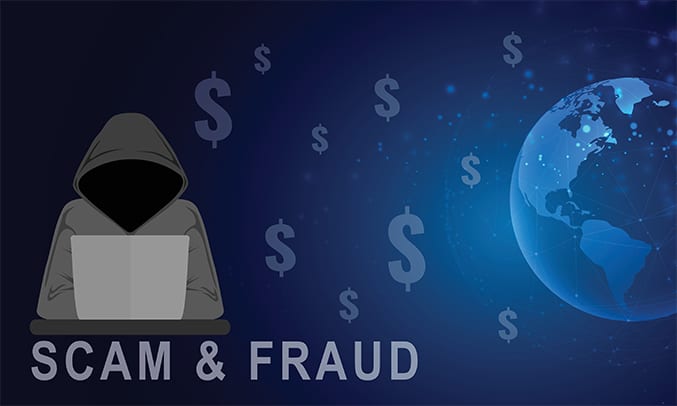
The primary way scammers get to people on PayPal is by offering to open an official PayPal account on a given seller’s behalf. If a seller does not have PayPal, the scammer offers to open one to buy something from the seller. Such types of scams are very common on sites like Etsy. The scammer would find out which Etsy seller does not have a PayPal account. Once found, the scammer would contact the Etsy seller, offer to buy some products and also set up the PayPal account as a bonus. The buyer may send an official-looking link to sign up for PayPal as well. Throughout this whole process, scammers want to collect personal information about the seller. Such types of scams are very common since most sellers on Etsy generally are not professionals and only offer products as a hobby.
Another method used for scamming on PayPal involves the scammer finding a target e-store, contacting the seller, purchasing a product and paying via PayPal. However, the scammer will also provide a fake shipping address. The shipping service will then try to deliver the product to the fake shipping address to no avail. After that, the shipping service will contact the buyer for a valid shipping address, which the buyer/scammer will provide to receive the goods before contacting PayPal and asking for a chargeback for not receiving the goods. PayPal will check if there is proof of delivery to the original invalid address and will not find any and thus would not cover the loss. The change in shipping address PayPal scam is not as common anymore since PayPal has introduced seller and buyer protection systems.
One other common PayPal scam is when scammers abuse the PayPal family and friends option. The family and friends option reduces the transaction fee since PayPal wants to facilitate payments between non-business customers. Scammers know that most users would want to use the family and friends feature to pay for everyday transactions with low fees. Then, the scammer will set up shop as a seller and ask the buyer to pay via the friends and family feature. But once the payment is made, the seller will not ship the goods and will simply vanish. The buyer will have a very low chance of finding success by filing a complaint with PayPal since the buyer chose to pay via the family and friends method, which doesn’t necessarily entertain chargeback requests. This scam is fairly popular. Some YouTube streamers have resorted to using the feature to charge viewers for online events so that the viewer is not able to claim a refund later if the event is disconnected.
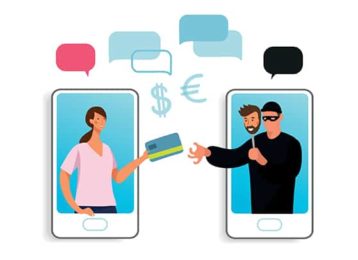
Finally, the fake invoice PayPal scam is still in business. In the PayPal invoice scam, scammers make a tremendous amount of effort to craft an email that would dupe the intended target. The email contains a link and is sent to the potential victim as an invoice for goods. The victim may not remember buying something, but that is where scammers put in the effort to forge the email. The link takes the user to a payment form, which is really a fake PayPal page. Once the potential victim has input the PayPal details on the fake PayPal page, the PayPal account is taken over by the scammer.
How do I Avoid Getting Scammed on PayPal?
To avoid getting scammed on PayPal, users need to take specific steps for the different types of PayPal scams. For example, to avoid PayPal affiliate scams, never do business with partners that are unknown or online-only. Check the credentials of the third-party affiliates if there are any. Go through the approval and verification process with great care. Users should wait for two to three months before paying affiliates via PayPal to account for customer complaints and chargebacks.
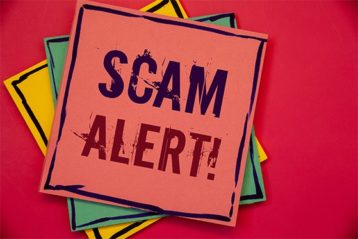
To avoid PayPal scams that abuse the official return policy, sellers should pack items properly and advertise products without exaggeration or trickery. Providing pictures of the product is also a great way to make sure that customers are purchasing the same item as shown. To reduce the number of returns, sellers should offer a proper return policy. Blacklisting customers who waste time or are not straightforward is another way to avoid return abuse scams. One way to do that is to create an Excel list and track troubling customers or use a Macro. Reporting customers who abuse the return policy on platforms like eBay is another way to stay safe.
To prevent employees from misusing an employer’s PayPal account, companies and organizations should run proper background checks and review staff account activity. Employees who don’t need access to employer PayPal accounts shouldn’t be able to use company accounts. Employers can also use PayPal’s user management tool to keep the access list up-to-date. Keeping safe from PayPal employment scams involves not using anyone else’s PayPal address and never transferring money to an unknown account. Suppliers should be verified first and paid later.
To avoid getting scammed via the overpayment scam, users should do the same as above and not transfer money via PayPal to any unknown actor. In a situation where a genuine customer has inadvertently overpaid for the product, the seller should cancel the order and start a new one.

Guarding against the fake shipping address scam via PayPal is as simple as requesting the shipping service to not allow buyers to reroute packages. Moreover, sellers should always validate the shipping address before mailing the product.
Tips for avoiding the prepaid shipping label scam are as straightforward as not accepting shipping labels. Sellers should always check the “Transaction Details” page for the address where the product has to be shipped. The PayPal Seller Protection program can come in handy as a safety net for handling suspicious transfers.
Sellers should also never use the shipping service the buyer requests to use as that, in many cases, leads to the shipping service PayPal scam. As mentioned, check the “Transaction Details” section and ship to that address alone.
How to Identify Real PayPal Emails?
To identify real PayPal emails, users should always review the sender’s email address as phishing emails don’t have the official PayPal email address in the sender’s field. Scammers usually change their name to “PayPal Service” or some variation of that name. However, if the user can ignore the name of the sender and instead look at the email address, identifying fake PayPal emails becomes easier.
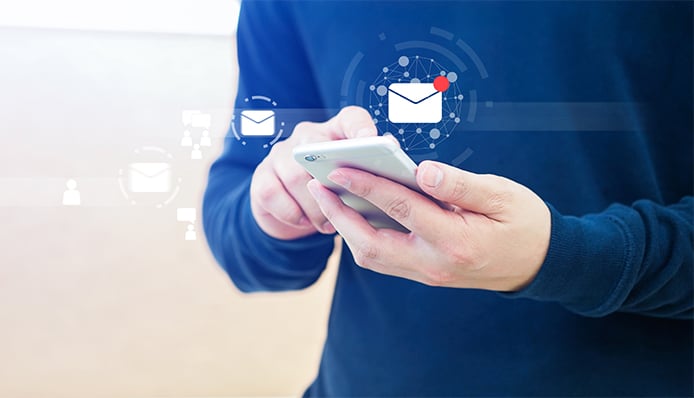
Depending on the email service provider, users can simply hover over the name of the sender of a suspicious email. Email addresses belonging to scammer groups are typically long and contain an unconventional mix of numbers and letters. Official emails from PayPal will always come from paypal.com and generally use the recipient’s business name or first and last name.
Another way to identify a real PayPal email message is to consider the overall tone of the message. Scammers design fake emails from PayPal and other services to cause the receiver to panic and make rash decisions quickly. Such fake emails usually claim that the user’s PayPal account has been temporarily restricted or banned, which is just a ploy to change the user’s state of mind quickly.

After informing the user of a restricted account, the fake PayPal email from scammers will ask the user to visit a link or supply personal information to enable or activate the account. Real PayPal emails never communicate with the user in this manner. The recommended way for PayPal to inform the user of any problems with a given PayPal account is via the message center on the official website and app. So, users should always try to sort out problems through the official website console instead of email. PayPal has also mentioned that the service never asks users for documents to confirm the identity of the account via email.
One other effective way to identify real PayPal emails is to examine the grammar used in the email message or any other communication channel. Scam emails pretending to be from PayPal usually contain grammar mistakes, poor phrasing and spelling errors—all things missing from legitimate PayPal correspondence. To further help customers identify real PayPal emails, PayPal has officially stated that the company always uses the customer’s real name in email messages and never addresses customers as “Dear” or “Dear Customer.” Scammers usually do not have the resources to correctly identify the full name of the customer to be targeted, which is why checking for grammar mistakes and personalization is key to distinguishing real PayPal emails.
How to Report a Fake PayPal Email?
The first step to report a fake PayPal email message is to contact PayPal via the official website rather than reporting the fake PayPal email to a third-party service or online forum. To do that, users need to go to PayPal’s official website and log in with the relevant username and password. Once logged in, the user should forward the message to PayPal. This is where users should not copy and paste the contents of the email message to PayPal since doing so could cause critical information regarding the scammers to be lost. PayPal users should not change any information contained in the scam email address. Users also shouldn’t download the scam email in any format and then send the scam email to PayPal as an attachment to an email message.

The user should then delete the scam PayPal email after forwarding the message to PayPal. While PayPal analyzes the fake email message and takes steps to block the suspect PayPal account, the user has to take the extra steps to not only delete the fake email but also look for suspicious transactions. To do that, the user should go back to the official website, log in and then check for any transactions that were not authorized willingly. Then, the user should report those transactions to PayPal and change the current password to a stronger one. Password generators can help with this.
Users who want to change a PayPal password should go to the website, log in, go to “Settings,” and then “Security.” From there, click the “Update Password” option, create a strong password and save the changes.
PayPal’s website mentions that users can send/forward scam emails to this email address: spoof@paypal.com. The process mentioned above not only works with fake emails but also PayPal scam text messages. Usually, PayPal scam text messages want the PayPal user to click on a link within the contents of the SMS message. Again, users should not click on the link in the SMS message. Instead, the user should take a screenshot and forward the complete telephone number along with the message to spoof@paypal.com. Similarly, if the PayPal scam is through a telephone call, simply take a screenshot of the number and send the image to the above-mentioned email address. Users are free to describe what the caller said over the phone call to PayPal’s customer support team.
Does PayPal Refund Money if You Get Hacked?
Yes, PayPal does refund money if a PayPal user gets hacked, but there are lots of requirements and conditions the user must meet to claim a refund or receive support.
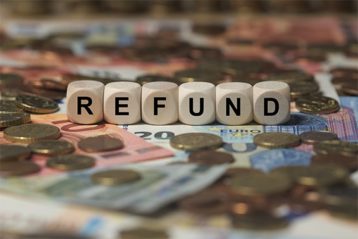
The 180-day refund policy applies when the user purchases something via PayPal, but the seller does not ship the products. If fraud is involved, the user can cancel the PayPal payment. The condition for the 180-day refund policy is simple: the transaction in question must have a “Pending” status. The user can go to the “Activity” page and click on the option to cancel the suspicious item. PayPal will check if the payment was made and whether 30 days have passed since the order date. If that requirement is met, PayPal will refund the amount into the user’s account.
However, PayPal usually processes payments quickly. Once the payments are processed, and the user’s account gets scammed/hacked, there is little PayPal can do. In such cases, PayPal usually asks the buyer to get in touch with the seller and request a refund directly. However, the general policy remains the same: Users can open a payment dispute and then request a refund from PayPal, provided that 180 days have not passed since the date of purchase.
The second tool users can try is the PayPal Purchase Protection policy, which PayPal labels as a buyer’s safety guarantee. PayPal provides dispute resolution and fraud protection services and can offer further help if hackers take over an account and start making purchases.
For example, the PayPal Purchase Protection policy says that users are protected if the PayPal account in question has been charged for something that the owner of the account did not buy. The Purchase Protection program also kicks in if the buyer doesn’t get the item that was purchased previously. If scammers take the payment and then send a product that does not conform to the advertisement, PayPal can activate the Purchase Protection policy. This guarantees that the buyer gets full reimbursement, including shipping costs.
This is important:
The Purchase Protection policy’s conditions are that the user has to open up a dispute within a 180-day period of any anomaly. In the case of unauthorized transactions or charges, the user must open a dispute within 60 days. There are many other conditions as well; for example, users cannot use the Purchase Protection program to claim refunds for prepaid cards, items that are as shown in advertisements, custom-made items, machinery, donations, funds transferred to family and friends, items for which the payment was made in-person and items that violate the service’s policies.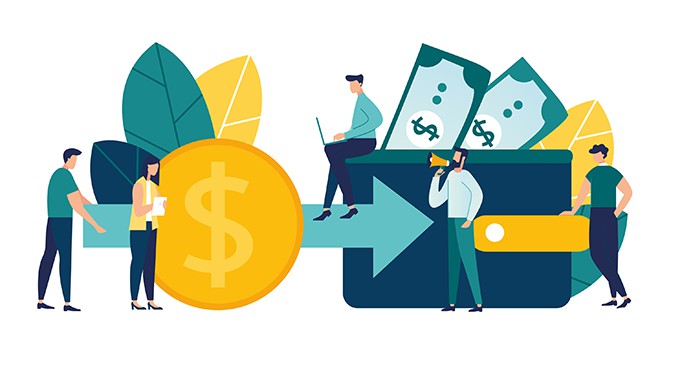
Users who have been hacked or scammed can also use PayPal’s chargeback feature to secure refunds. Buyers and sellers usually connect credit cards to PayPal accounts. Scammers try to exploit that, tricking users into paying for a bogus transaction via PayPal. With the chargeback feature, PayPal tries to resolve the problem by negotiating with the credit card service. In essence, PayPal has no control over whether or not a chargeback request would be successful and therefore, the service’s policies do not cover chargeback refunds. With that said, once the credit card company puts in the request for a chargeback on a particular transaction, PayPal does do the favor of freezing the seller account until the issue is resolved.
Note:
The chargeback method works in situations where the item is damaged or defective or the buyer didn’t receive the item that was advertised or described by the seller. Apart from that, the chargeback option also activates when there are duplicate charges, the transaction contains billing errors on the amounts or dates, and amounts have been deducted from the buyer’s account without the buyer’s knowledge.Which Is Safer: PayPal or Credit Card?
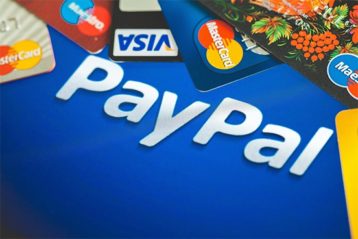
The PayPal vs. credit card debate is an old one, and the answer varies depending on the user’s situation, needs and requirements. While PayPal claims the sole purpose of the service is to make online transactions safer, scammers are always devising novel methods of defrauding people of their money. PayPal and credit card companies both strive to make transactions safe.
PayPal’s strengths include the fact that platforms such as eBay have PayPal as the default payment method, and PayPal allows users to receive and send money quickly to any other person in any country that supports the service.
Another reason why PayPal might be the better option than a credit card is the fact that PayPal offers a secure mobile app that activates contactless payments at physical retail shops. PayPal also owns Venmo and Xoom, apps that allow users to send and receive money with a smartphone.
PayPal tries to offer the best features of conventional credit cards as well by offering the PayPal Cash Card, a MasterCard debit card that users can purchase items with in physical stores and online. PayPal also now offers a PayPal credit card. The company leverages a partnership with Synchrony Bank to offer two credit cards to users who qualify. Synchrony and PayPal also offer a line of credit feature.
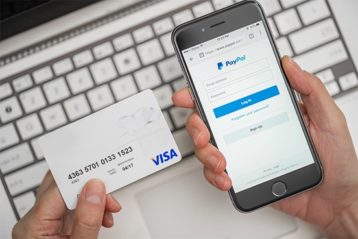
Although the features mentioned above allow PayPal to reach more customers and increase the number of transactions occurring on the platform every year, the features are designed to secure online transactions on a fundamental level. Credit card companies also have many security measures in place, but PayPal offers some advanced cybersecurity features that very few banks are able to deploy and maintain.
The strong points of credit cards include protection against abuse of stolen physical cards and stopping unauthorized transactions via online platforms. Another indirect advantage of credit cards in the U.S. is that the law states the user is only liable for up to $50 of damages as a result of fraudulent transactions via stolen credit cards.
Note:
Credit card companies have tried to catch up to payment services such as PayPal by introducing new security features, including chip credit cards. Such credit cards make use of a chip that gets inserted into a chip reader when customers pay for items or complete transactions. Older credit cards had a magnetic stripe that the merchant or retailer would swipe on the side of a reader to allow users to pay for items.Another security feature in microchip credit cards is encryption. Any transaction completed via a microchip credit card is encrypted, which protects against hackers trying to steal financial and personal information. Credit card companies have also started to offer the EMV feature, which secures information that has to travel to relevant services to complete any transactions.
The major security features of PayPal include the PayPal Purchase Protection policy and the ability to claim a refund if the purchased item does not arrive. The PayPal Purchase Protection feature allows users to get full reimbursement plus shipping costs if the product is different from how the seller described. There are many requirements for the feature to work properly and for users to get money back in case of a fraudulent transaction, but generally, the feature is useful.
PayPal also allows users to report and claim refunds if a given order does not arrive. If a hacker compromises a PayPal account and starts making purchases, PayPal doesn’t hold the user liable for such transactions if the user files a report within 60 days.
Apart from that, PayPal allows users to restrict transaction amounts per day, requires strong passwords, recommends keeping applications and operating systems up-to-date, forces the buyer to enter a card verification value (CVV) number, and uses a billing address verification system. All of these features make PayPal safe.
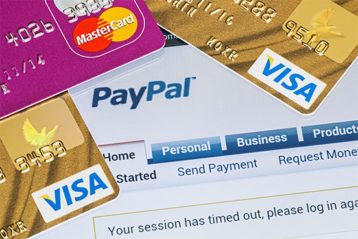
Keeping in mind all the features of both credit cards and PayPal, users should be able to see PayPal as the safer option. PayPal employs all the latest security measures necessary for safe electronic transactions and has a bug bounty program that pays people who find vulnerabilities within the system.
Comparatively, not all credit card companies employ the latest technologies to safeguard users and typically have underdeveloped refund policies.

